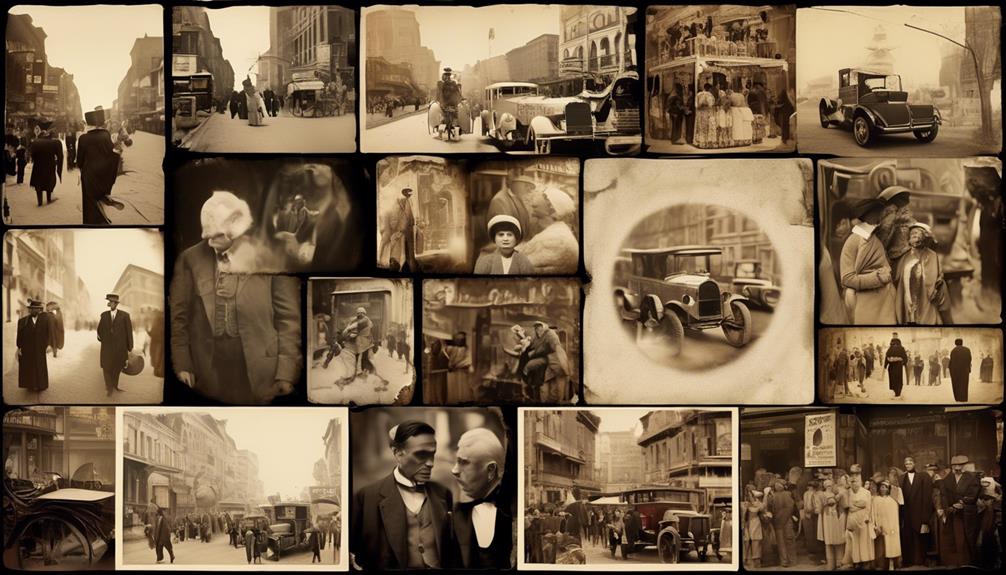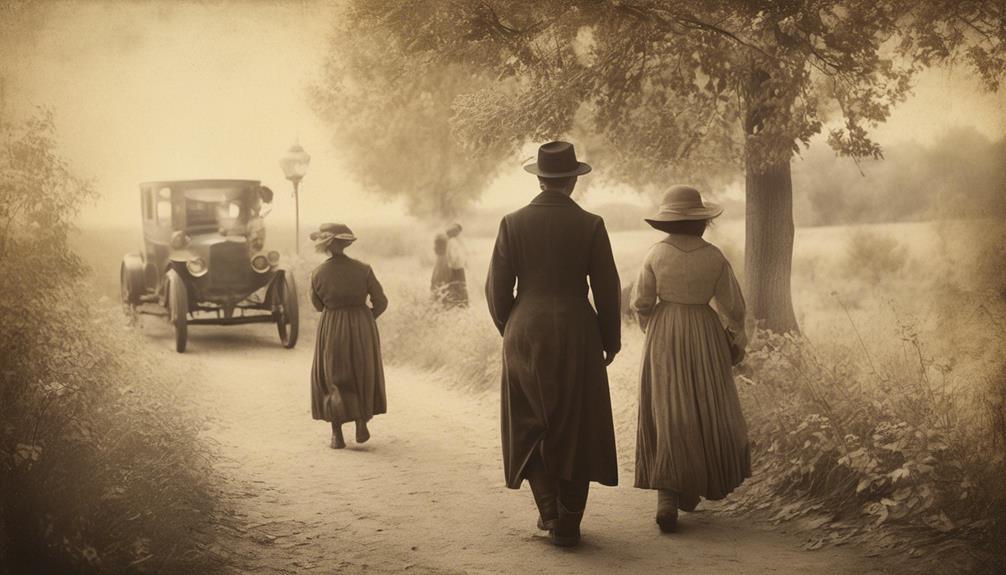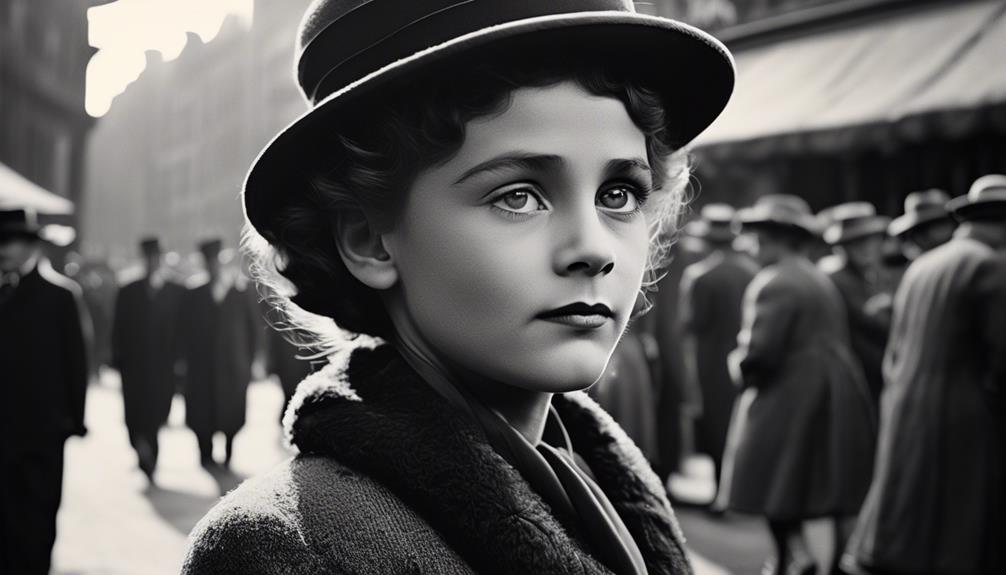Please note this post may contain affiliate links picked by me (Jay) that I have deemed may be of interest or relevant to you the reader of this.
These links do not affect the cost of the thing if you decide to purchase but i may get a little money if you choose to purchase.
For more information on my affiliate link policy click here.
I've always been captivated by the power of photography to tell stories and evoke emotions. From the dreamlike images of the Pictorialism movement to the thought-provoking works of the Social Documentary movement, there's an entire world of historical photography movements waiting to be explored.
Each movement has its own unique style and techniques, offering endless inspiration for newcomers to the world of photography.
So, grab your camera and join me on a journey through eight inspiring historical photography movements that are sure to ignite your passion and spark your creativity.
Key Takeaways
- Pictorialism Movement revolutionized photography by embracing artistic expression and challenging traditional notions.
- Surrealism Movement transformed photography into the realm of imagination, blurring the lines between reality and fantasy.
- Street Photography Movement celebrates the beauty and authenticity of everyday life, capturing fleeting moments and showcasing the diversity of the urban landscape.
- The Social Documentary Movement documented social issues, raised awareness, and inspired individuals and communities to take action for social change.
Pictorialism Movement
The Pictorialism Movement, which emerged in the late 19th century, revolutionized the world of photography by embracing artistic expression and challenging the traditional notions of what a photograph should be. The movement sought to elevate photography to the status of fine art by exploring pictorialism techniques and pushing the boundaries of the medium.
Pictorialists believed that a photograph could be more than just a straightforward representation of reality. They experimented with various techniques to create images that were reminiscent of paintings, using soft focus, manipulated lighting, and alternative printing processes. By doing so, they aimed to evoke emotions and convey a subjective interpretation of the world.
The impact of pictorialism on modern photography can't be overstated. It paved the way for photographers to approach their work with a more artistic mindset, encouraging them to think beyond capturing a moment and instead focus on storytelling and visual impact. Pictorialism challenged the notion that photography had to be objective and pushed photographers to explore new creative possibilities.
Today, we still see the influence of pictorialism in contemporary photography. Many photographers continue to experiment with techniques that blur the line between reality and imagination, creating images that aren't bound by traditional conventions. Pictorialism opened the door to a world of artistic possibilities, and its legacy continues to inspire and shape the way we view and create photographs.
Surrealism Movement
With its dreamlike imagery and unconventional juxtapositions, the Surrealism Movement transformed photography into a realm of boundless imagination and profound introspection. Surrealism continues to influence contemporary photography, pushing the boundaries of what's considered possible in the medium.
Here are some techniques used in surrealistic photography that have made a lasting impact:
- Multiple Exposures: By exposing the same frame multiple times, photographers create ethereal and dreamlike compositions that blur the lines between reality and fantasy.
- Photomontage: Combining different images to create a single cohesive piece allows photographers to construct scenes that are impossible in reality, challenging viewers to question their perception of truth.
- Distortion and Manipulation: Surrealist photographers often manipulate their subjects through techniques like distorting or stretching, creating a sense of unease or wonder.
- Scale and Proportion: Playing with scale and proportion can create a sense of disorientation and surrealism, making the viewer question their perception of space and reality.
- Symbolism and Metaphor: Surrealistic photography often uses symbolic elements and metaphorical representations to convey deeper meanings and evoke emotions.
Street Photography Movement
Exploring the vibrant streets through the lens of a camera, street photography captures the essence of everyday life with an unfiltered and candid perspective. It's a dynamic and exciting photography movement that celebrates the beauty and authenticity of urban exploration. Street photographers roam the streets, capturing the raw emotions, unique characters, and candid moments that make up the tapestry of city life.
What sets street photography apart is its ability to capture the fleeting moments that might otherwise go unnoticed. It's about being in the right place at the right time, ready to capture that split second when something extraordinary happens. The streets become a playground for photographers, offering endless opportunities for creative expression and storytelling.
Street photography is a form of visual storytelling that allows photographers to document the human experience in its most authentic form. It's about capturing the energy, the chaos, and the beauty of everyday life. It's about showcasing the diversity and complexity of the urban landscape, and the people who inhabit it.
In the world of street photography, every corner turned, every face seen, and every interaction witnessed is a potential photograph waiting to be captured. It's a constant search for those small, yet significant, moments that define our existence. So grab your camera and hit the streets, because there's a world of candid moments waiting to be discovered.
New Vision Movement
The New Vision Movement revolutionized photography by challenging traditional composition and embracing innovative techniques. This movement, which emerged in the early 20th century, sought to explore abstract realism and dynamic composition, capturing everyday life in a fresh perspective.
Here are five key aspects of the New Vision Movement that transformed the world of photography:
- Experimental Angles: Photographers in the New Vision Movement experimented with unconventional camera angles, capturing images from unique perspectives. This approach added depth and intrigue to their photographs, challenging viewers to see the world in a new light.
- Dynamic Composition: Rather than adhering to the rules of traditional composition, New Vision photographers embraced dynamic composition. They played with lines, shapes, and patterns, creating visually striking images that broke away from the conventions of the time.
- Emphasis on Texture: The New Vision Movement placed a strong emphasis on texture, using it as a means to convey depth and emotion in their photographs. By highlighting the tactile qualities of their subjects, photographers were able to evoke a visceral response from viewers.
- Abstract Realism: The New Vision Movement blurred the line between realism and abstraction. Photographers experimented with techniques such as double exposure and multiple perspectives, creating images that were both familiar and otherworldly.
- Everyday Life Redefined: The New Vision Movement sought to capture the essence of everyday life, but in a fresh and unconventional way. Photographers took mundane subjects and transformed them into captivating works of art, revealing the beauty and complexity of the ordinary.
The New Vision Movement was a groundbreaking era in photography, pushing the boundaries of what was considered acceptable and inspiring future generations of photographers to embrace innovation and creativity.
Social Documentary Movement
The Social Documentary Movement captured the raw and compelling stories of marginalized communities, bringing their struggles to the forefront of public consciousness. This powerful form of documentary photography played a crucial role in driving social change and raising awareness about important social issues. Through their lenses, photographers were able to shed light on the realities faced by marginalized groups, giving a voice to those who were often unheard.
| Documenting Social Realities | Raising Awareness | Sparking Action |
|---|---|---|
| Photographing poverty, discrimination, and injustice | Sharing images through exhibitions, publications, and media | Mobilizing communities and advocating for change |
Documentary photography became a powerful tool for social change, as it allowed people to see and empathize with the struggles faced by marginalized communities. By capturing the truth and presenting it in a visually compelling way, photographers were able to engage viewers and evoke emotional responses. This, in turn, led to increased awareness and understanding of social issues that were often overlooked.
The role of photography in social change cannot be underestimated. It has the power to challenge societal norms, question authority, and bring about meaningful change. Through the Social Documentary Movement, photographers were able to document the injustices and inequalities that plagued society, and in doing so, they inspired individuals and communities to take action. Today, the legacy of the Social Documentary Movement continues to inspire photographers to use their craft as a tool for social commentary and change.
Frequently Asked Questions
What Was the Impact of the Pictorialism Movement on the Development of Photography as an Art Form?
The impact of the pictorialism movement on the development of photography as an art form was significant. Pictorialism challenged the notion that photography should be purely documentary, pushing boundaries and encouraging experimentation.
This movement embraced the idea that photography could be a means of artistic expression, blurring the lines between photography and other visual arts.
Pictorialism paved the way for future movements that focused on the creative possibilities of photography, ultimately shaping the evolution of the medium into the diverse and innovative art form we know today.
How Did the Surrealism Movement Influence the Use of Photography as a Means of Expressing the Subconscious Mind?
The surrealism movement had a profound influence on the use of photography as a means of expressing the subconscious mind. By embracing dreamlike imagery and unconventional techniques, surrealistic photographers sought to tap into the depths of the human psyche.
This innovative approach challenged traditional notions of reality and opened up new possibilities for artistic expression. Building on the impact of pictorialism, surrealism pushed the boundaries of photography as an art form, inspiring future generations to explore the depths of their imagination through the lens.
What Are Some Key Techniques Used in Street Photography to Capture Candid Moments in Urban Environments?
Are you curious about the key techniques used in street photography to capture candid moments in urban environments?
Well, let me tell you, composition is crucial. Leading lines and framing can add depth and guide the viewer's eye.
But it's not just about the technical aspects. Observation and anticipation are essential skills. Being aware of your surroundings and predicting moments before they happen allows you to capture those authentic and spontaneous moments that make street photography so captivating.
How Did the New Vision Movement Challenge Traditional Compositional Rules and Perspectives in Photography?
The new vision movement was a groundbreaking period in photography that challenged conventions and redefined perspectives. It pushed the boundaries of traditional compositional rules and encouraged photographers to explore new ways of seeing the world.
What Role Did Social Documentary Photography Play in Raising Awareness About Social Issues and Advocating for Change?
Social documentary photography played a crucial role in raising awareness about social issues and advocating for change. Through the power of visual storytelling, photojournalists captured the realities of marginalized communities and brought their stories to the forefront.
Conclusion
After exploring these eight inspiring historical photography movements, it's clear that photography has been a powerful medium for creative expression and social commentary throughout history.
From the dreamlike compositions of Pictorialism to the gritty reality captured in Social Documentary, each movement has left a lasting impact on the art form.
As a newbie photographer, I'm excited to take inspiration from these movements and incorporate their techniques and ideas into my own work. The possibilities are endless, and I can't wait to see where my photographic journey takes me.


